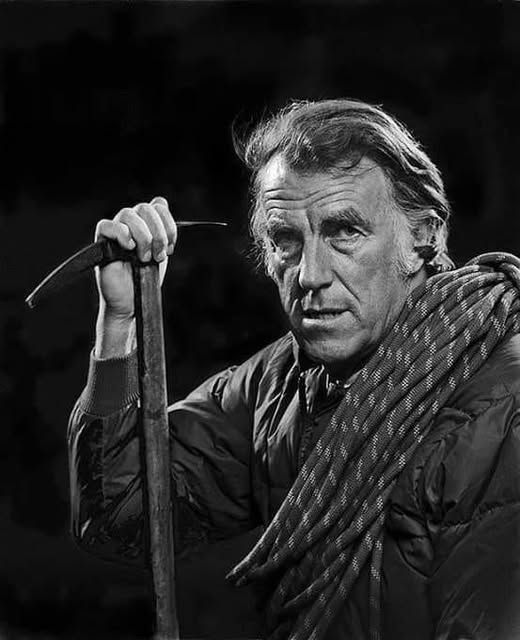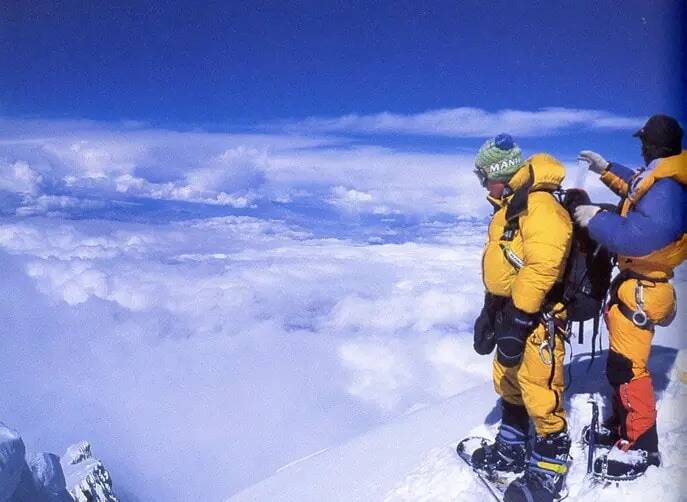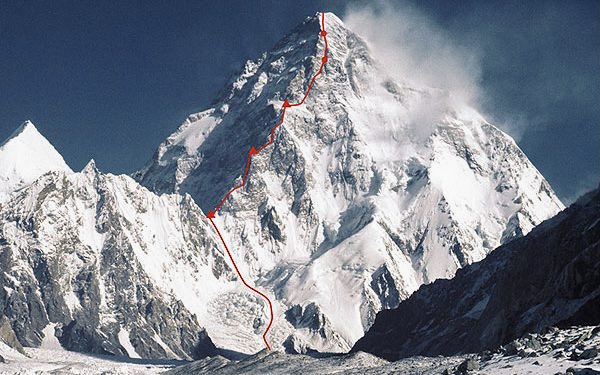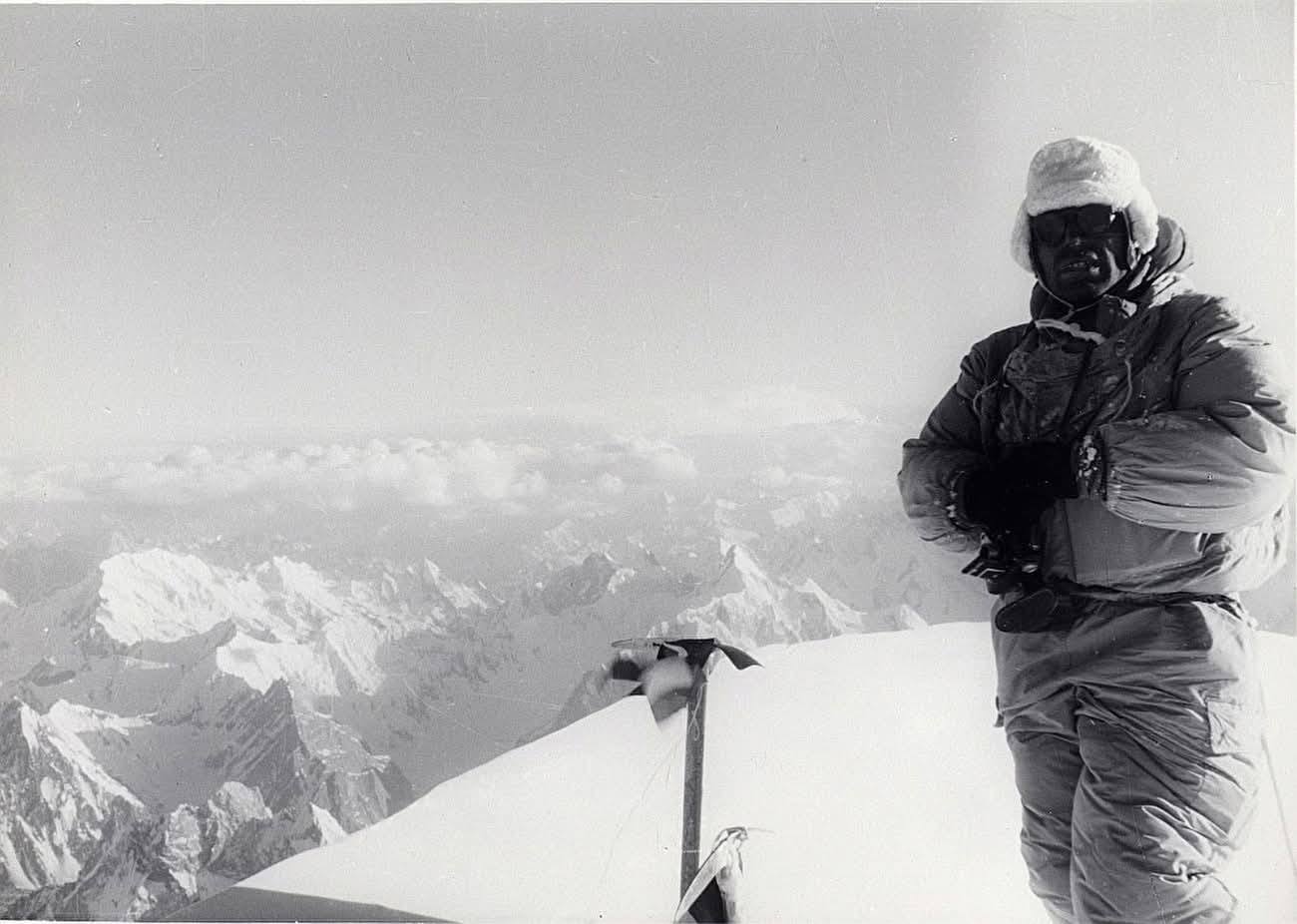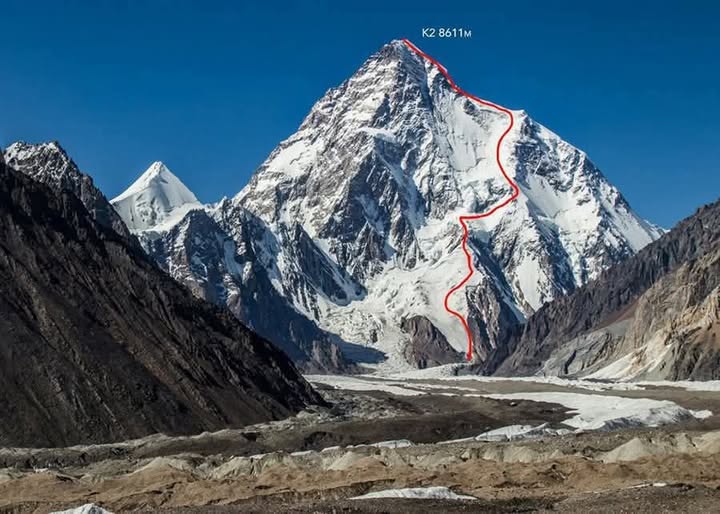In the summer of 1935, in the shadow of Mt Ruapehu, a boy from flat New Zealand laid eyes on his first mountain. It changed everything. It was sixteen-year-old Edmund Hillary, a shy, gangly boy; unsure of his place in the world, but something in the high, frozen wilds spoke to him. The ridgelines were silent, unflinching. That silence would become his compass.
He returned home changed. Mountains became his escape, then his training ground, and his calling. By 1939, he climbed his first peak, Mt Olivier. “The happiest day of my life,” he later wrote. In the post world war years, while the world rebuilt itself, Hillary built himself into one of New Zealand’s finest climbers. The Southern Alps shaped him, not just in skill, but in soul. He learned the craft under the guidance of Harry Ayres, a quiet, capable guide. The rope was short but the trust was absolute.
In 1951, Hillary joined a New Zealand expedition to the Indian Garhwal Himalaya. There, in Ranikhet, four Sherpas joined the team. It was his first expedition to the Himalayas and the first real encounter with the people who would shape the rest of his life. Later that year, he was invited by Eric Shipton to join a reconnaissance of Everest’s southern approach. It was the start of something large.
By 1953, the world knew his name.
On May 29, just before noon, Edmund Hillary together with his companion Tenzing Norgay stood atop the highest point on Earth, Mt Everest, 8,848.86 meters above sea level. No one had done it before. They moved as partners, through crevasses, cornices, and crushing fatigue, and summited together. The world erupted, Queen Elizabeth II knighted him and New Zealand celebrated. Kathmandu lifted Tenzing high in triumph. Hillary, ever the beekeeper’s son from Tuakau, took it all in stride.
He might’ve stopped there but he didn’t.
The mountain had given him something, and he intended to give something back.
In 1960, he returned to Nepal. But this wasn’t a climb. He was leading a hybrid expedition, part scientific research, part exploration, and part spiritual curiosity. They studied high-altitude physiology. They looked for signs of the yeti. But one night, in a frozen camp, Hillary turned to his sirdar and asked, “What do your people need most?” The answer came without pause: “A school.”
In June 1961, high in the Khumbu at the foot of sacred peaks, he built one. The first school in Khumjung, a simple structure, but the start of something profound. It marked a turning point. Hillary would spend the next four decades building not just schools, but an entire infrastructure of compassion across the Everest region.
During his earlier treks in the 1950s, Hillary had observed the enormous difficulty climbers and locals faced simply reaching the Everest region. Getting to Khumbu required weeks of hiking from Kathmandu through steep trails and narrow valleys. Accidents were common. Medical aid was far away. Supplies were often carried on backs or strapped to animals. So in 1964, Hillary led the construction of a short, rugged airstrip high above the Dudh Kosi River, a project that would permanently reshape Himalayan travel.
Lukla Airport, hacked out of a hillside with the help of local labor and Hillary’s persistence, was born out of need. What once took weeks on foot could now be done in a forty-minute flight. Hillary knew the risks and resisted making it too modern, he refused to level it entirely, believing the uphill slope would help slow planes down. It remains one of the most dangerous airstrips in the world, but it has saved countless lives and opened the Everest region to education, medicine, commerce, and rescue.
The early days were tough. The bureaucracy was brutal and the resources were scarce. Some governments questioned his intentions. Aid officials doubted the scope. But Hillary persisted with a climber’s stubbornness. In 1963, his “Schoolhouse Expedition” combined mountaineering with practical work: fresh water systems, medical care, new schools in Pangboche and Thame. When smallpox broke out, his team vaccinated over 7,000 people. That hadn’t been the plan. It became the priority.
Then came Khunde Hospital.
Perched at 3,840 meters, where the wind never rests, Hillary and his team built the hospital in six weeks during the fall of 1966. Stone by stone, beam by beam, the building took shape. It was run by volunteers, staffed by New Zealand doctors, and maintained by Sherpas. No road reached it. Everything came by foot, yak, or air. The hospital stood not just as a facility, but as a symbol — of what trust, grit, and partnership could accomplish.
Hillary’s relationship with the Sherpas was never ornamental. It was built in storms and strengthened in tea houses. He didn’t romanticize them, nor did he see them as a people to be saved. They were his friends. Co-builders and equal partners. They asked for help. He provided it, but always with them, not for them.
Still, not everything went smoothly.
The Nepalese government remained cautious. The political winds shifted often. When Hillary’s 1961 expedition made an unauthorized ascent of Ama Dablam, they revoked his Makalu permit. Even years later, officials quietly warned each other that Hillary could be “unpredictable.” He wasn’t a diplomat. He was a doer. That independence was both his strength and his stumbling block.
In the 1970s, the aid expanded. A new hospital at Phaphlu, in lower Solu was built in partnership with the New Zealand government. By then, international aid norms were changing. Health care and education were seen as cornerstones of development, and Hillary’s work fit neatly into those frameworks. More schools rose. Clinics opened. The work took root.
But then, everything stopped.
On March 31, 1975, his wife Louise and daughter Belinda were killed in a plane crash shortly after taking off from Kathmandu. They were en route to Phaphlu. The grief nearly destroyed him. “She was the one who kept us going,” Hillary would later write. For two years, he drifted, heartbroken and numb. The mountains that had always revived him now echoed with silence.
Then came the Ganges.
In 1977, Hillary launched “Ocean to Sky,” a jet boat expedition up the sacred river of India. From the Bay of Bengal to the Himalayas, they followed the current upstream, navigating mudflats, monsoon storms, and spiritual awakenings. It was part adventure, part healing. At Varanasi, during a riverside puja, he felt something shift. “For a time, the sadness lifted,” he wrote. “Life was worth living again.”
In 1985, he took another unexpected path. New Zealand’s Prime Minister offered him the role of High Commissioner to India which he accepted. Then, for four years, he lived in New Delhi, managing diplomacy but never far from Nepal. When Tengboche Monastery burned, he helped rebuild it. He launched the Himalayan Environment Trust. He championed conservation at a time when trekkers were overrunning the trails and forests of Everest.
But even in environmental circles, his path was rocky.
Sherpas accused him of supporting a national park that limited their freedoms. They feared being turned into museum pieces. One friend said: “Hillary first brought sugar to our lips, now he throws salt in our eyes.” It hurt. But he understood. The 1976 election in Khumbu was fought over the park, and he knew that protecting the land sometimes meant opposing the people he loved most. Still, he pressed forward.
The 1990s brought more change. The aid structure was formalized. The Himalayan Trust, Hillary’s foundation, began shifting control to Nepalese leadership. By 2002, Ang Rita Sherpa officially took the reins. Hillary still visited, though the walks had stopped. Helicopters carried him up now, his body could no longer adapt to the altitude, but his heart never stopped climbing.
In 2003, on the 50th anniversary of the Everest ascent, Nepal made him its first honorary citizen. The gesture was symbolic, but heartfelt. In Khumbu, children still studied in schools bearing his name. Khunde Hospital still served its people. Hillary wasn’t just a foreigner who once climbed their mountain; he became part of the landscape.
On January 11, 2008, Sir Edmund Hillary died in Auckland. He was 88.
New Zealand held a state funeral. Five Sherpas placed ceremonial khatas on his coffin. In Khumbu, prayers were chanted. A local doctor said, “Our loss is heavier than Everest.” Norbu Tenzing Norgay, eldest son of his companion Tenzing Norgay from 1953, spoke at the ceremony. “His love for the Sherpa was like a father to a child — unconditional.”
The Tenzing-Hillary Airport in Lukla still welcomes thousands of trekkers each year. Many never realize they land on a strip carved by the man who once climbed for glory, and then spent the rest of his life building quietly, far from cameras.
The route he followed wasn’t a summit. It was a life strung across knife-edge decades, demanding total commitment. There were no fixed lines. No rescue. No certainty. But he moved forward. Not for fame. Not for fortune. But because the mountain had given him something, and he had to give something back.
And the reward?
It was not just a summit photo. It was the sight of a Sherpa girl reading in her village school. A mother receiving medicine in a remote clinic. A forest growing where before there was none. These were his high points. These were his unshakable summits.
Edmund Hillary moved through silence, and gave it meaning. In a world of noise, he left a trail where only wind, will, and the kindness of one man endured.


